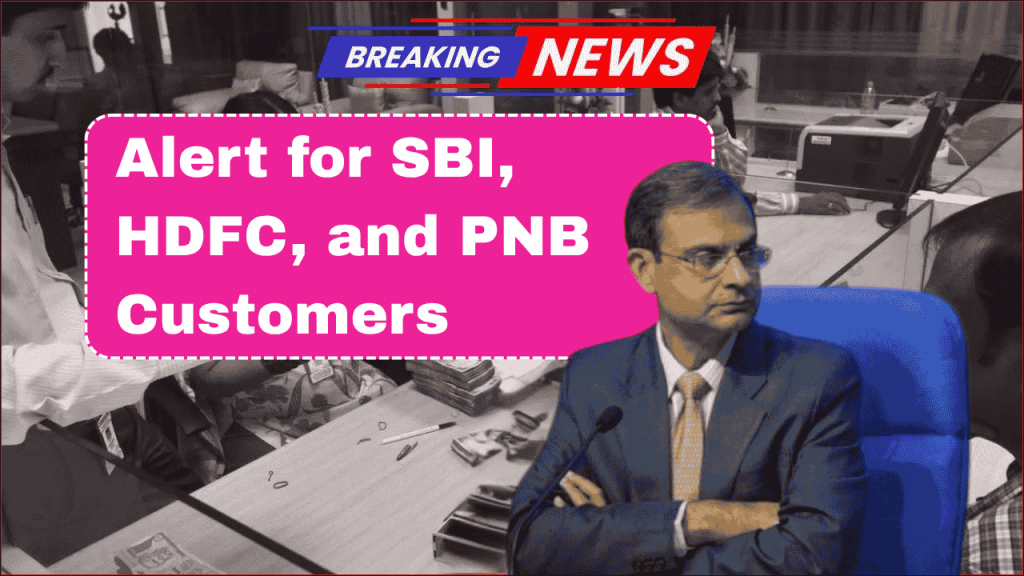
Major Indian banks have announced significant revisions to their minimum balance requirements for savings accounts, effective this month. State Bank of India (SBI), HDFC Bank, and Punjab National Bank (PNB) have implemented new policies that will impact millions of account holders across the country. Understanding these changes is essential to avoid unexpected penalties and manage your banking relationships effectively.
Understanding the New Banking Landscape
The revised minimum balance requirements represent a strategic shift in how India’s leading banks manage their savings account portfolios. These changes align with the Reserve Bank of India’s Master Circular on Customer Service and comply with the Banking Regulation Act, ensuring that banking operations remain streamlined while maintaining quality customer service.
The new policies introduce a location-based approach to minimum balance requirements, recognizing India’s diverse economic landscape. Banks now categorize branches into metropolitan, urban, semi-urban, and rural areas, with different balance requirements for each category. This tiered system aims to make banking more accessible while reflecting the varying cost of living and income levels across different regions.
Key Policy Changes Across Major Banks
The implementation of these new policies brings several important changes that customers must understand. Banks have restructured their penalty frameworks, introduced enhanced notification systems, and created special provisions for specific customer categories.
State Bank of India (SBI) – New Requirements
SBI has implemented a comprehensive location-based minimum balance structure that varies significantly across different branch categories.
| Account Type | Metro | Urban | Semi-Urban | Rural |
|---|---|---|---|---|
| Regular Savings | ₹3,000 | ₹2,000 | ₹1,000 | ₹500 |
| Salary Account | ₹1,000 | ₹500 | ₹500 | ₹500 |
| Student Account | No minimum | No minimum | No minimum | No minimum |
| Senior Citizen | No minimum | No minimum | No minimum | No minimum |
SBI’s penalty structure is based on the percentage of shortfall from the required minimum balance:
| Shortfall Percentage | Metro & Urban Branches | Semi-Urban & Rural Branches |
|---|---|---|
| Up to 50% | ₹10 + GST | ₹7.50 + GST |
| 50-75% | ₹15 + GST | ₹10 + GST |
| Above 75% | ₹20 + GST | ₹12 + GST |
HDFC Bank – Updated Structure
HDFC Bank has revised its minimum balance requirements with a focus on account types and geographic locations, offering different tiers for various customer segments.
| Account Type | Metro & Urban | Semi-Urban | Rural |
|---|---|---|---|
| Regular Savings | ₹5,000 | ₹2,500 | ₹1,000 |
| Premium Savings | ₹10,000 | ₹5,000 | ₹2,500 |
| Basic Savings | ₹1,000 | ₹500 | ₹500 |
| Student Account | ₹500 | No minimum | No minimum |
HDFC’s penalty charges are determined by the shortfall amount:
| Shortfall Amount | Penalty Charges |
|---|---|
| Up to ₹999 | ₹150 + GST |
| ₹1,000 – ₹4,999 | ₹300 + GST |
| ₹5,000 and above | ₹600 + GST |
Punjab National Bank (PNB) – Simplified Approach
PNB has adopted a more straightforward structure for minimum balance requirements across different account types and locations.
| Account Type | Metro | Urban | Semi-Urban | Rural |
|---|---|---|---|---|
| Standard Savings | ₹2,000 | ₹1,000 | ₹500 | ₹250 |
| Premium Savings | ₹5,000 | ₹3,000 | ₹2,000 | ₹1,000 |
| Basic Account | No minimum | No minimum | No minimum | No minimum |
PNB’s penalty structure is based on account type:
| Account Type | Penalty per Quarter |
|---|---|
| Standard Savings | ₹50 – ₹100 + GST |
| Premium Savings | ₹100 – ₹300 + GST |
Impact on Different Customer Segments
The new policies affect various customer groups differently, reflecting their unique banking needs and financial capabilities.
Urban and Metropolitan Customers face higher minimum balance requirements but typically have better access to banking services, higher income levels, and more digital banking options. These customers benefit from enhanced services that justify the higher balance requirements.
Rural Customers enjoy significantly lower minimum balance thresholds, supporting financial inclusion initiatives. The reduced requirements recognize the economic realities of rural areas while ensuring banking services remain accessible to all income groups.
Special Categories receive particular attention under the new guidelines. Senior citizens are exempt from minimum balance requirements across all banks, while students enjoy zero or minimal balance requirements. Government benefit recipients and low-income groups have access to basic savings accounts with minimal requirements.
Practical Strategies for Account Management
To navigate these changes effectively, customers should implement several key strategies:
Automation is crucial for maintaining minimum balances. Setting up standing instructions for monthly transfers from other accounts, arranging salary direct deposits, and utilizing auto-sweep facilities can prevent balance shortfalls while maximizing returns.
Digital banking tools offer powerful features for account management. Balance alerts notify customers when balances approach minimum thresholds, expense tracking helps monitor spending patterns, and financial dashboards provide comprehensive views of personal finances.
Account consolidation may be necessary for customers with multiple accounts. Closing dormant accounts, maintaining fewer accounts with higher balances, and choosing accounts that best suit specific needs can simplify financial management.
Expert Recommendations for Financial Planning
Financial experts recommend adopting structured approaches to adapt to these banking changes. Zero-based budgeting ensures every rupee is allocated purposefully, while the 50/30/20 rule provides a balanced approach to needs, wants, and savings.
Long-term financial planning becomes increasingly important under the new policies. Creating emergency funds equivalent to 3-6 months of expenses, developing structured savings plans with specific goals, and considering investments that offer better returns than savings accounts can help maintain adequate account balances.
Moving Forward: Adapting to Change
The revised minimum balance requirements from SBI, HDFC, and PNB reflect India’s evolving banking sector. While these changes may require adjustments to financial habits, they also provide opportunities to reassess and optimize banking arrangements.
Success in navigating these changes depends on staying informed about specific requirements, utilizing available digital tools, and implementing sound financial management practices. Banks offer various account options, and finding the right match for individual financial situations is crucial.
Regular account reviews, including monthly statement checks and annual account type assessments, help ensure banking relationships remain beneficial. Customer service engagement is equally important – don’t hesitate to clarify doubts, inquire about waivers, or request personalized recommendations.
As India’s banking landscape continues evolving, maintaining open communication with financial institutions and regularly reviewing account structures will ensure positive banking experiences that support overall financial health.
Frequently Asked Questions
Q: When do the new minimum balance requirements take effect? A: The revised policies are effective from this month across all participating banks.
Q: Are senior citizens exempt from all minimum balance requirements? A: Yes, senior citizens enjoy exemption from minimum balance requirements across SBI, HDFC, and PNB.
Q: Can I switch my account type to avoid higher minimum balance requirements? A: Yes, customers can explore basic savings accounts or other account types with lower requirements.
Q: How will I be notified if my balance falls below the minimum requirement? A: Banks have implemented enhanced notification systems including SMS alerts and mobile app notifications.













